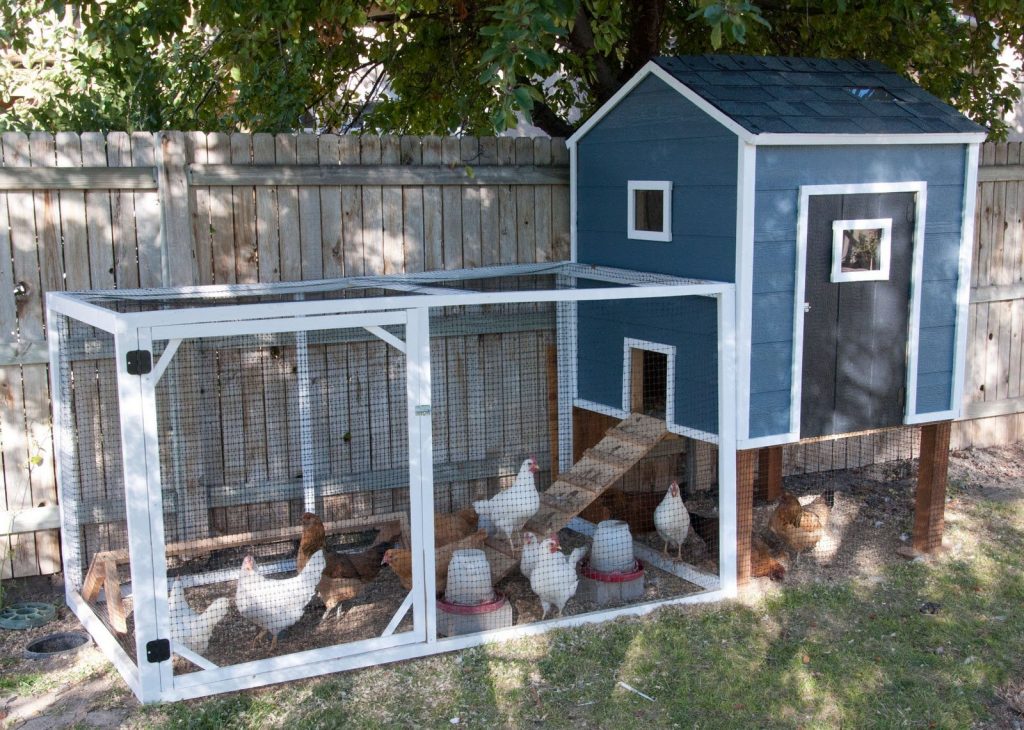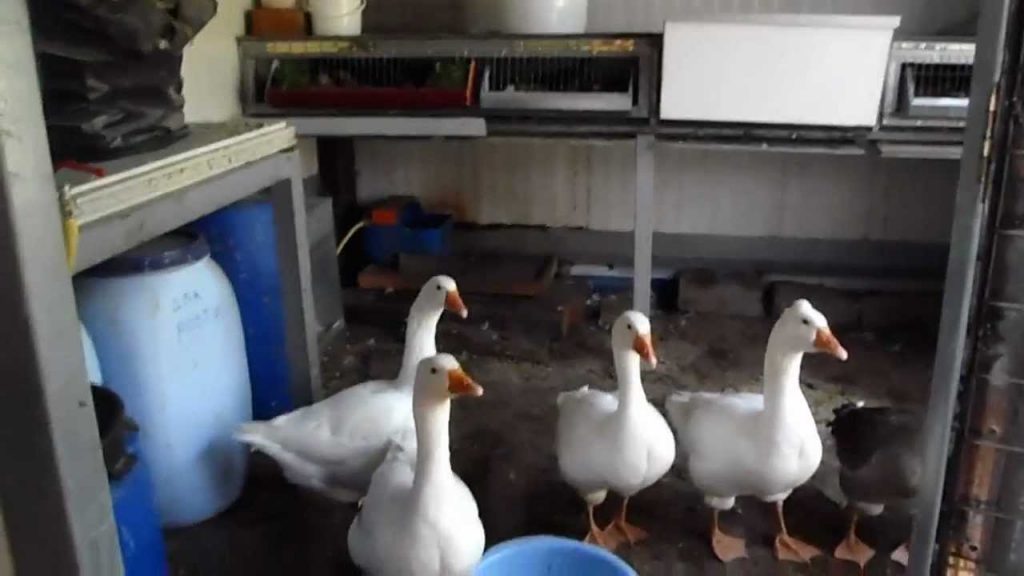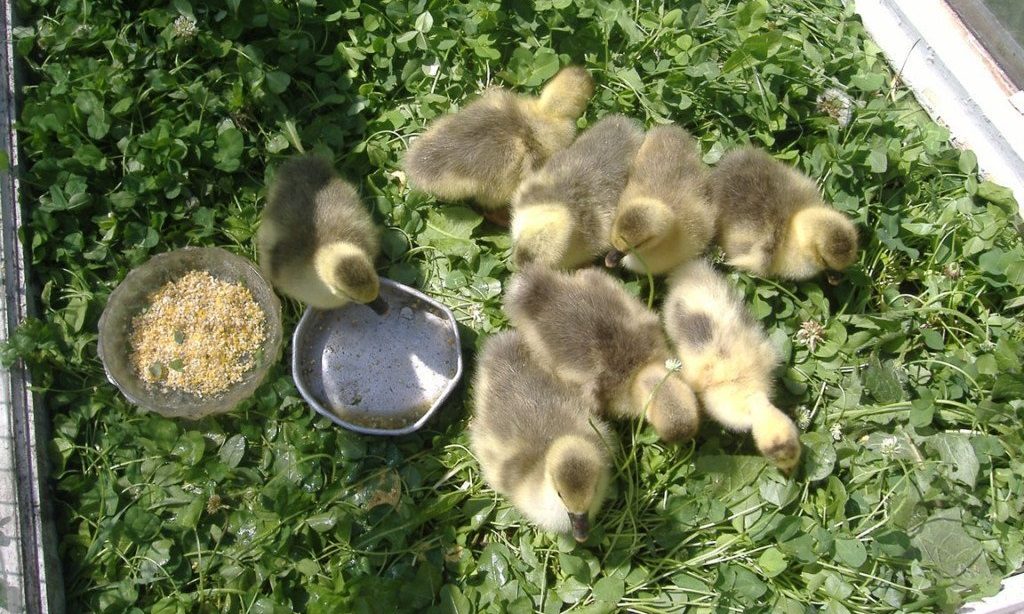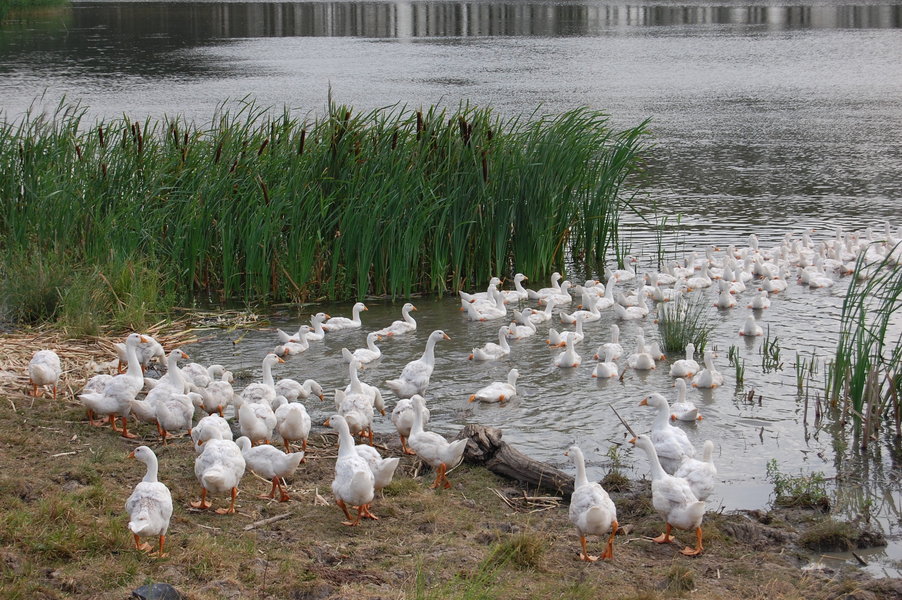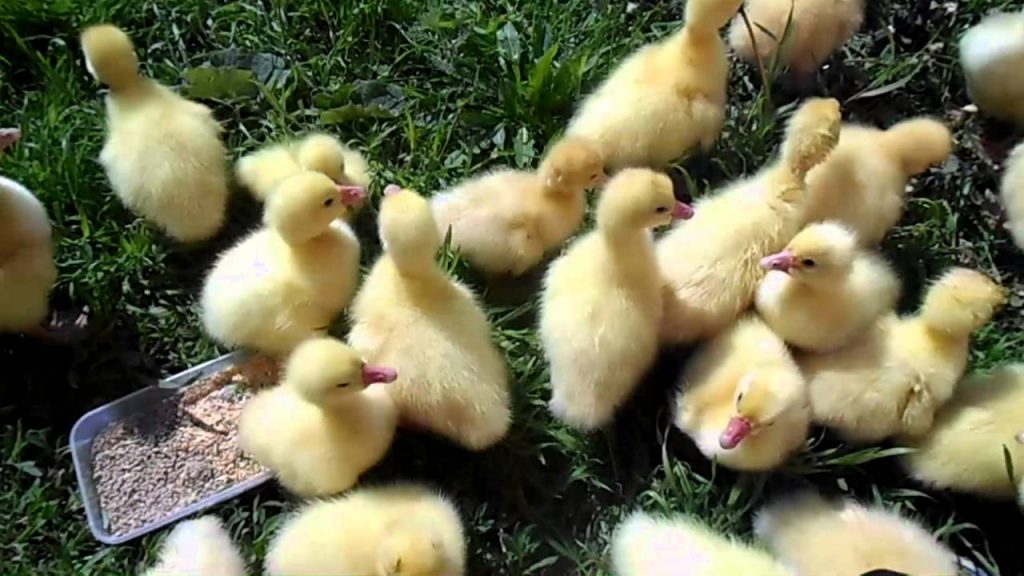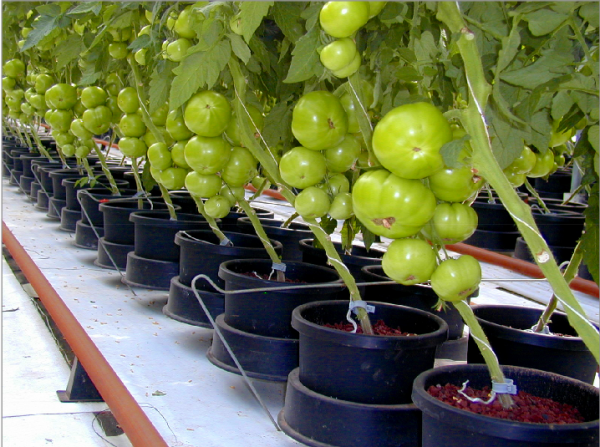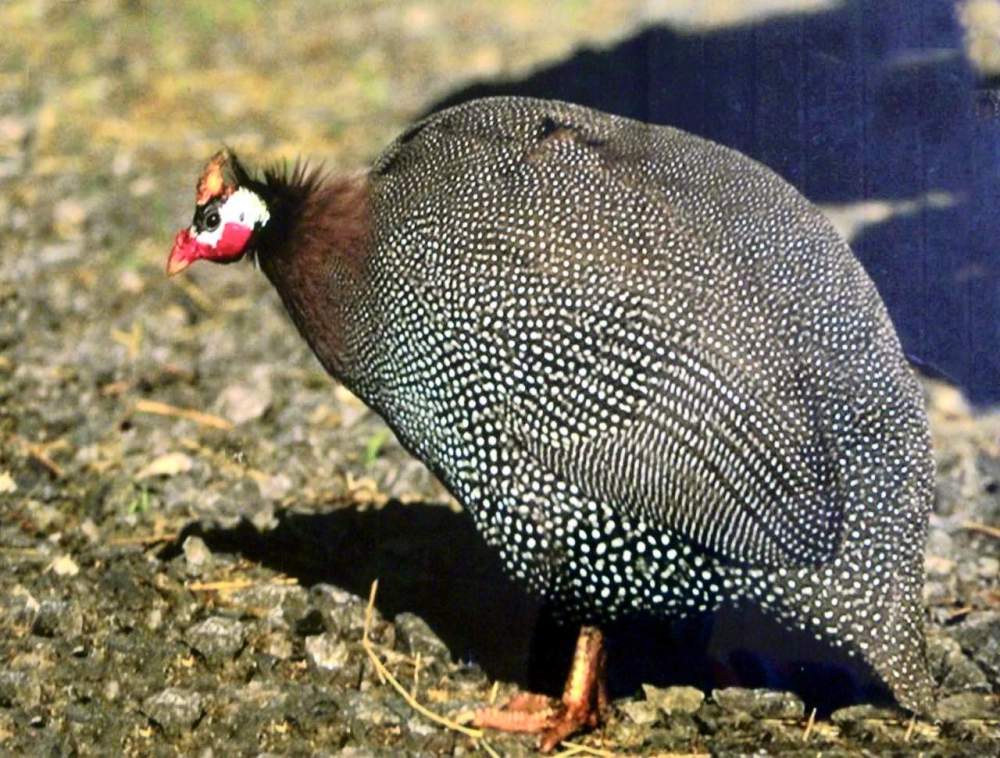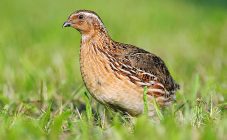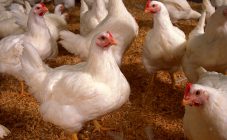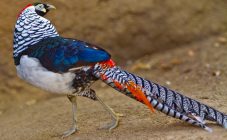Content:
Geese are bred for eggs, meat, fat and fluff. The bird is unpretentious in care and feeding; for favorable breeding, geese require a large grazing area, even more than a reservoir. Geese grow rapidly, gaining a mass of about 5 kg in 60-70 days of growth. Geese are able to graze themselves and come to the pen from the walk, in the flock no one moves far from each other.
Start breeding geese
It can be difficult for a novice farmer to raise goose offspring from eggs, even with an incubator, so it is recommended to start rearing with goslings. It is better to purchase daily goslings in proven farms in order to know for sure that the parents were vaccinated, and the effect of the drugs was passed on to the offspring. The gosling should be examined, it should look fluffy, dry, with clean eyes, be active and curious.
Choosing a place for a poultry house
Premises for growing goslings should be prepared in advance. For the first week, the chicks are kept in a so-called brooder - a special box or box, you need to put a dry bed there and illuminate it with a lamp around the clock in the first week. The correct microclimate must be maintained in the box, suitable for the first days of life for goslings. The goose house should be dry, warm and clean, the air should flow without drafts.
The density of goslings should be such that they can simultaneously approach the feeder. With a high stocking density of poultry, nutrition will be uneven: those goslings that could not eat enough will weaken, the weight and height in the livestock will be different, and the development will be uneven. When goslings are crowded, the litter is quickly contaminated, diseases arise, and the safety of the young is reduced.
The temperature in the brooder in the first three days of the life of the young should reach + 30C °, the next week it is reduced to + 20C °, with a relative humidity of 65-75%. From day 10, goslings are kept at a temperature of + 14C °. Air humidity in the room - 70-80%. On hot summer days, additional humidification is required for young animals.
Feeders and drinkers for goslings
Any structure from which it will be convenient for small geese to get food, without the ability to get into it and scatter food, will serve as a feeder. To do this, a pallet is constructed from wood, with side walls, connecting them with a handle. The size of the trough is made according to the number of goslings, so that they all simultaneously fit near the trough at the time of feeding.
In order to water goslings, it is convenient to use automatic drinkers or small containers placed on a pallet. Homemade drinkers are arranged so that goslings cannot climb into them, swim or pour water. For example, they use small plates or take a container with sides and turn a jar of water onto it, placing the jar on small wooden stands at the bottom of the container, water in such a structure will be added as it is consumed. This will keep little goslings from getting wet and keep the litter dry, which will help prevent colds.
Breeds for breeding
Meat breeds of geese are divided into light and heavy, body weight, which reaches, respectively, from 5 to 12 kg.
Kholmogory geese are one of the largest birds.An adult gander weighs about 10 kg, a goose 8 kg. Geese of the Kholmogory breed are gaining weight quickly. Birds, 2 months old, can be sent for slaughter, the mass of which by this time reaches up to 4 kg. The egg production of the breed is low, on average 45 eggs per year. The eggs have good performance for hatching goslings by an incubation method.
Large gray - a breed well adapted to difficult climatic conditions and sharp temperature changes. The gander weighs up to 9 kg, the goose - up to 7 kg. Egg production - up to 60 eggs per year. The breed has high rates of hatchability.
The Lindovskaya breed came from the crossing of Chinese and Russian geese breeds. Snow-white geese are fast growing, geese are up to 9.5 kg, geese - 8.5 kg. Egg production - up to 50 eggs per season.
There are about 20 breeds of geese for breeding in the household, some of which are bred specifically for collecting down. Breeding geese for the purpose of obtaining eggs for food consumption is not so popular. The oviposition of geese is seasonal, and eggs are often contaminated with salmonellosis and other pathogens.
Aviary for geese
A house for geese is selected depending on the purpose of growing the bird. Geese are not afraid of cold weather and are able to live in a non-insulated pen, but such a poultry house is not suitable for keeping poultry in order to obtain eggs. At low temperatures, the activity of ganders decreases, and in geese, egg production. The laid eggs freeze, and they will not produce offspring.
The main conditions for a poultry house for geese are the absence of drafts and high humidity. The floor is raised by 20 cm, a litter is arranged on it. The litter must be dry as the geese sleep on the floor. Dirty, damp litter will stain feathers and impair their ability to keep warm.
For deep bedding, use dry, mold-free sawdust or straw. The litter is placed on a clean floor, after disinfecting it and sprinkling it with a layer of fluffy lime. A layer of litter for young animals is made 15 cm high, for adults - half a meter each. When the litter gets dirty, a new fresh layer is added so you don't need to clean the area every day.
The internal surfaces of the house should be smooth, without protrusions and crevices, painted with moisture resistant paints or whitewashed. In a log poultry house, geese will pluck out moss and tow, so the grooves are closed with planks, both outside and inside.
The house does not need bright light, but ventilation is necessary. Air exchange with the help of ventilation is required, because the bird in the course of its life generates heat, carbon dioxide, and harmful gases are released from the surface of the litter. The room is ventilated using industrial mounted ventilation or in a simple way, with the opening of vents or windows, without the formation of a draft in the presence of a bird in the room.
The accommodation rate for goslings aged from 1 to 30 days is 8-10 pcs. per 1 sq / m. As it grows, the stocking density is reduced; in adults, 1 goose is placed per 1 sq / m.
Geese of some breeds become sexually mature from 8 months of life; when raising geese to obtain eggs in a poultry house, they arrange nests. Nests are made of planks or plywood, 60 cm long and 50 cm wide and 50 cm high. A wooden floor is built in the nest and bedding is laid. The nests are separated from each other by a solid partition. It is recommended to whitewash the finished nests with a solution of lime. The goose is committed to its nest and loves to nest in the same place. Therefore, poultry farmers are advised to make the number of nests according to the number of hens or arrange for them a separate room with nests so that they are not disturbed by other birds.Goose eggs are laid mainly at night or in the early morning, so it is recommended to collect them as early as possible so that they are less dirty or damaged.
After two days after birth, the goslings are kept in a warm place, then they can be transplanted to the hen. Depending on whether the goose bred offspring, the methods of how to plant the goose with the goose differ. So, no more than 10 goslings trust a young hen. Having planted the goslings, they look at the reaction during the day: if the goose let go and accepted the goslings, they are left together for several days, and on day 3, provided a warm day, they are released for a walk. A gander is allowed near the walking goslings. An experienced goose knows how to raise a gosling and can easily raise up to 25 goslings, take care of them, warm them, and teach them to nibble the grass. Chickens and turkeys can also act as hens, if a reservoir is not provided, goslings up to a month old.
Feeding goslings at home
In the first week, goslings are fed 8 times a day, at intervals of 2-3 hours. For feeding, they take starter feed for waterfowl, in the form of small granules. After 10 days of life, the number of feedings is reduced to 4-5 times a day, using compound feed.
At the age of one month, goslings and adult geese feed on grass. Depending on the quality of the green pastures, add grain in the evening with a small supplement and a wet mash in the morning.
When a damp mash is fed for feed, it is important to ensure that it does not deteriorate, otherwise the goslings may be poisoned.
From vegetables, geese can be given garden vegetables, peelings and tops, especially beets, carrots, cabbage, potatoes.
In the absence of mixed fodders in the diet, which contain vitamins, supplements are given separately. Vitamins are put into feed and added to water.
Geese get all the necessary trace elements and vitamins from the grass, grow well and get sick less. Geese can only nibble on low-growing grass, so it needs to be mowed periodically. Quinoa, ragweed, rape - those herbs that should not be given to goslings. Unlike goslings, adult geese themselves distinguish which grass they can pick.
Walking geese
Geese differ in that the more space for them to walk, the better. The bird is able to graze in free grazing and will always return home in the evening. But geese can also be kept in places for walking fenced with a net, access to which goes directly from the poultry house.
Weekly goslings, if the weather is sunny and warm, can be let out for a walk and so gradually accustom them to fresh air and sun. The walking time is gradually increased, starting from half an hour. From 20 days of age, the goslings should be outdoors all day, then they begin to grow and develop well. If there is no possibility of grazing in the fields, then it is necessary to put fresh grass in the feeders every day.
There should be shaded areas in the walking area in case the bird shelters in extreme heat. Geese do not tolerate high temperatures well and from this they can get sick and die.
With the possibility of swimming in a pond, the meat qualities of the poultry are improved. Bathing has a positive effect on the plumage and overall health of the geese, because the geese clean their feathers while swimming.
In the absence of rivers or ponds, artificial pools can be installed on the plots, but the experience of farmers shows that geese can be well raised even without a reservoir.
In wet, rainy weather, goslings still covered in down are not allowed to walk. Drenched goslings freeze and often die.
When walking, young animals are protected with a net from predators and cats. If there is a site with grass, the net with the goslings is rearranged as they pluck the grass.
Gosling care
The first ten days of age goslings are the most difficult for the survival of young animals, and you need to know how to care for the goslings. It is believed that after this time, the remaining goslings will survive in the future, with sufficient fattening and walking.
Goslings need warmth and light to thrive early in life. The drinking water is changed every day. For prophylactic purposes, a solution of pink potassium permanganate is added to the water for two-week-old goslings.
A special solution is also used, then how to drink the gosling in the first days of life. The solution is prepared in the following way: in 1 liter of hot water add 1 tablet of furacilin and tetracycline, 1 g. ascorbic acid, 1 crystal of potassium permanganate, mix and allow to cool. Add one tablespoon of honey or sugar to the cooled solution. Goslings are soldered with such a solution for 3 to 5 days in a row, a one-day drink will not give a result.
The immunity of young goslings has not yet fully developed, so they can be susceptible to many infections, as well as injuries and poisoning. Goslings can get sick from birth, from a goose, or from improper keeping. Care for goslings and treatment of diseases is carried out using antibacterial, anthelmintic drugs, and for prevention - vitamin fortifying complexes.
Helpful hints and tips
Goslings growing at home, to start breeding it is important:
- choose healthy, strong chicks;
- observe a high thermal regime for raising young animals;
- keep the house clean and dry;
- take preventive measures in time to prevent loss of young animals;
- provide walking space and sufficient drinking water, especially for some breeds.
Growing a gosling at home is suitable for novice poultry breeders, because goslings are considered to be more hardy than chicks of other poultry.
Geese are fast-growing and unpretentious birds, with the possibility of self-sufficiency in food. Geese, in the presence of green pasture and a reservoir, leave in the morning and come in the evening. It takes two to five months to raise a gosling as an adult bird for meat.
